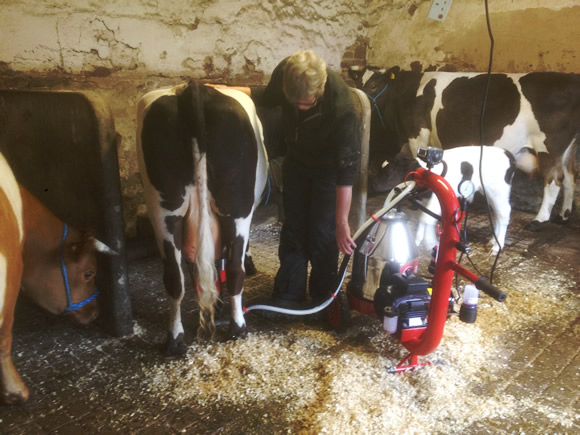The Shetland cow was traditionally a dairy breed – the crofter’s kye would have been milked to provide dairy produce for the crofter and his family – a vital source of nutrition – and to perhaps sell, and would have produced a calf each year to be killed for beef or sold to generate a cash income.
As lifestyles have changed, the Shetland cow has become increasingly used as a suckler cow for beef production, often crossed to a commercial beef bull.
However, there is growing interest again among smallholders in keeping a “house cow”. While many people immediately think of the Jersey, the Shetland is the ideal house cow. A Jersey cow can produce up to 6000 litres of milk in a lactation, but will need significant bagged feed to do this. A Shetland can produce plenty milk for the house from forage alone, while raising a calf; she can produce enough but not an excess, that will take too much time and space to process.
The commercial dairy industry is also undergoing a change – with a resurgence of cow-calf systems with a focus on ethics, provenance and regenerative farming. We hope that the Shetland cow may rediscover her niche as a dairy cow in the years to come.

Blizzard watching the milking.
